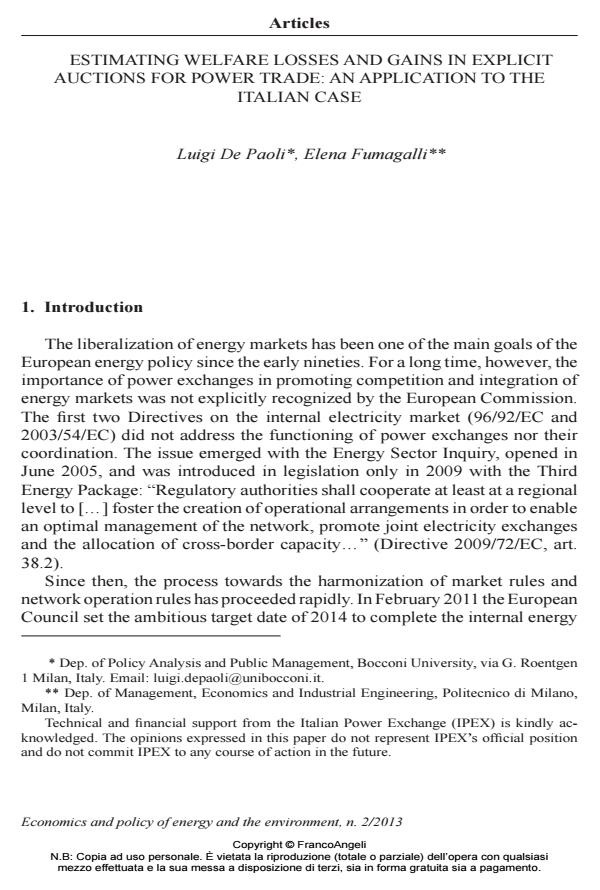Estimating welfare losses and gains in explicit auctions for power trade: an application to the Italian case
Titolo Rivista ECONOMICS AND POLICY OF ENERGY AND THE ENVIRONMENT
Autori/Curatori Luigi De Paoli, Elena Fumagalli
Anno di pubblicazione 2013 Fascicolo 2013/2
Lingua Inglese Numero pagine 29 P. 153-181 Dimensione file 997 KB
DOI 10.3280/EFE2013-002009
Il DOI è il codice a barre della proprietà intellettuale: per saperne di più
clicca qui
Qui sotto puoi vedere in anteprima la prima pagina di questo articolo.
Se questo articolo ti interessa, lo puoi acquistare (e scaricare in formato pdf) seguendo le facili indicazioni per acquistare il download credit. Acquista Download Credits per scaricare questo Articolo in formato PDF

FrancoAngeli è membro della Publishers International Linking Association, Inc (PILA)associazione indipendente e non profit per facilitare (attraverso i servizi tecnologici implementati da CrossRef.org) l’accesso degli studiosi ai contenuti digitali nelle pubblicazioni professionali e scientifiche
Cross-border transmission capacities in Europe have been traditionally allocated via explicit auctions. As these will be replaced by implicit auctions, a relevant question regards the impact of this major transition on expected gains in social welfare. In this paper we study, first, the equations that describe the welfare loss associated with a suboptimal use of the transmission capacity. Second, by examining how suboptimal flows, and particularly adverse flows, change with the introduction of implicit auctions, we derive an original procedure that improves the accuracy of the welfare loss estimation when available market data are limited. Finally, we apply the proposed procedure to data pertaining to the Italian market and verify that for a net importer, such as Italy, the procedure derived in this work is particularly helpful in providing more accurate estimations of the welfare losses associated with explicit auctions. As implicit auctioning will eliminate these welfare losses, we interpret our results as a measure of the benefits associated with the current transition for the Italian market and use them to derive some more general implications.
Parole chiave:Electricity trade, Market coupling, social welfare.
Jel codes:Q43, L94, P48.
Luigi De Paoli, Elena Fumagalli, Estimating welfare losses and gains in explicit auctions for power trade: an application to the Italian case in "ECONOMICS AND POLICY OF ENERGY AND THE ENVIRONMENT" 2/2013, pp 153-181, DOI: 10.3280/EFE2013-002009